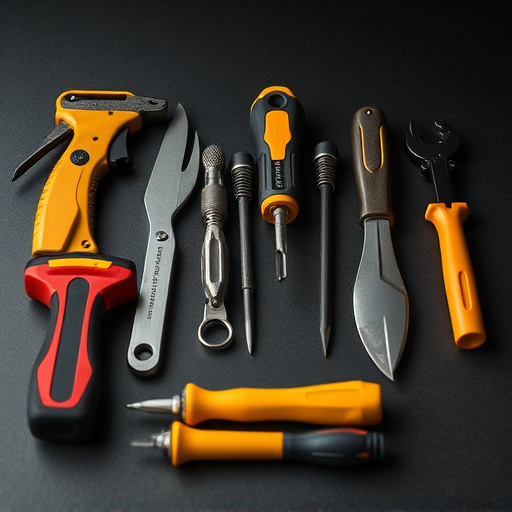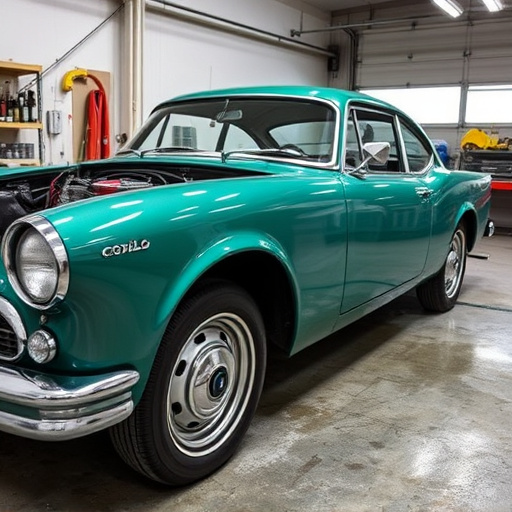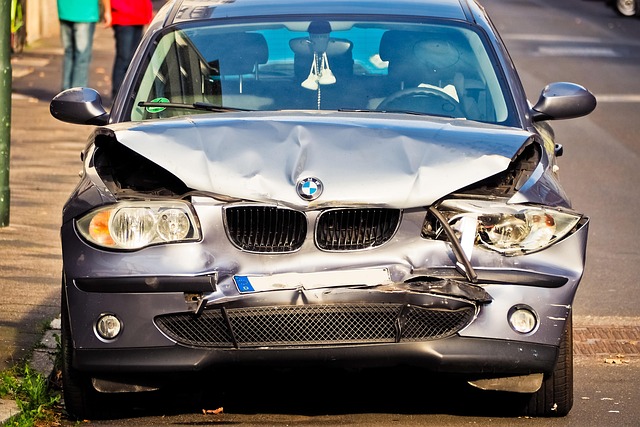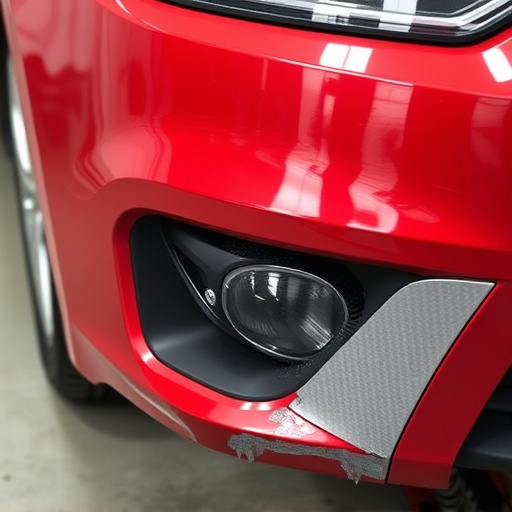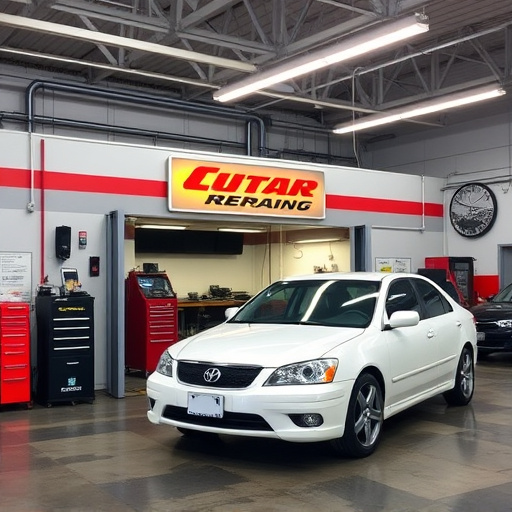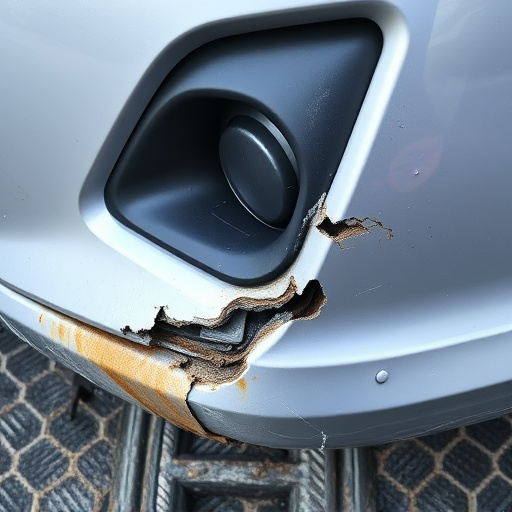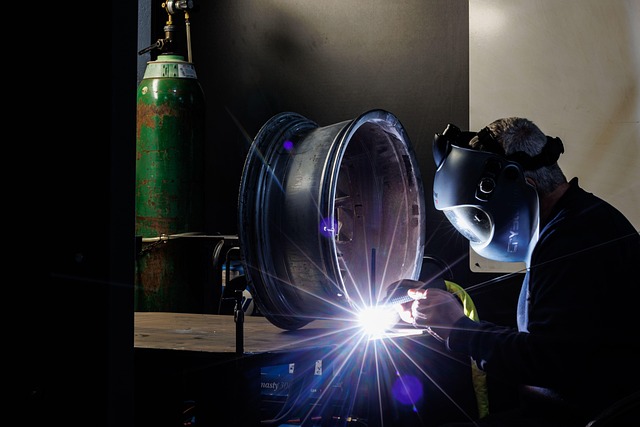Mercedes sensor adjustment is a crucial process ensuring all vehicle systems work harmoniously, as sensors transmit vital data for optimal performance and safety. Disruptions can arise from repairs or wear, requiring recalibration to reset readings and improve communication between modules. Regular adjustments at reputable shops maintain peak performance, prevent issues, and enhance overall safety and reliability, especially after collision repairs or auto body work.
Mercedes vehicles are renowned for their advanced technology and precision engineering. At the heart of this sophistication lie sensors that constantly monitor and adjust various systems for optimal performance. Over time, these sensors may require recalibration, especially after servicing or repairs. This article delves into the essential process of Mercedes sensor adjustment, exploring why it’s crucial for maintaining vehicle efficiency and safety. We’ll guide you through understanding and performing this critical task.
- Understanding Mercedes Sensor Adjustment: The Foundation for System Recalibration
- When and Why Full Vehicle System Recalibration is Necessary
- Step-by-Step Guide to Performing a Mercedes Sensor Adjustment
Understanding Mercedes Sensor Adjustment: The Foundation for System Recalibration

Understanding Mercedes Sensor Adjustment is key to achieving a full system recalibration across all vehicle systems. Sensors play a vital role in modern cars, collecting data and relaying it to various modules for optimal performance. In Mercedes vehicles, precise sensor adjustment ensures accurate communication between these modules, allowing the car’s computer to make informed decisions. This process involves calibrating sensors like speed sensors, oxygen sensors, temperature sensors, and more, each with specific parameters that need careful attention.
When a vehicle experiences issues or undergoes repairs, such as car paint repair or vehicle collision repair at an automotive body shop, it can disrupt sensor readings. Adjusting these sensors is a meticulous task, often requiring specialized tools and knowledge to ensure the vehicle functions correctly. Proper Mercedes sensor adjustment not only enhances performance but also contributes to safety by ensuring every system operates within designed parameters, especially during critical driving conditions.
When and Why Full Vehicle System Recalibration is Necessary

Over time, a Mercedes’ intricate network of sensors can drift out of calibration, leading to inefficient performance and potential safety risks. This occurs due to various factors such as normal wear and tear, extreme environmental conditions, or after certain repairs involving the vehicle’s electronic systems. When this happens, a full vehicle system recalibration becomes necessary.
Full system recalibration ensures that all sensors across multiple components—including engine management, transmission, braking, and active safety systems—are accurately reading and communicating with each other. It’s akin to resetting the vehicle’s brain, allowing it to make precise calculations and decisions based on real-time data. Regularly scheduling Mercedes sensor adjustments is crucial in maintaining optimal performance and addressing issues before they escalate, ultimately contributing to enhanced safety and reliability at a reputable auto body restoration or collision repair shop.
Step-by-Step Guide to Performing a Mercedes Sensor Adjustment

Performing a Mercedes sensor adjustment is a crucial process that requires precision and a deep understanding of the vehicle’s systems. It’s often necessary after certain types of repairs, especially those involving collision repair or auto body work. The goal is to ensure all sensors are operating optimally for precise vehicle performance and safety.
Here’s a step-by-step guide: Start by ensuring the vehicle is on a level surface and the engine is off. Next, use specialized diagnostic tools to access the sensor data, identifying any anomalies or discrepancies. Once identified, proceed with adjusting the sensors according to the manufacturer’s specifications. This might involve resetting the sensors’ calibrations or making physical adjustments. After completing the adjustments, perform another round of diagnostics to verify the changes and ensure all systems are functioning correctly. Remember, accurate Mercedes sensor adjustment is key for seamless auto painting and top-notch collision repair shop services.
Performing a Mercedes sensor adjustment is crucial for maintaining optimal vehicle performance. By recalibrating the systems, drivers can ensure precise control, enhanced safety features, and improved overall driving experience. This step-by-step guide provides an accessible approach to understanding and executing this process, empowering car owners to take charge of their vehicle’s capabilities. Remember that regular sensor adjustments are key to keeping your Mercedes running smoothly in today’s digital era.

